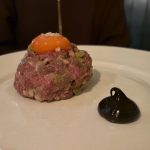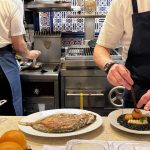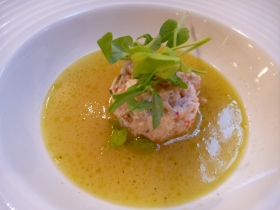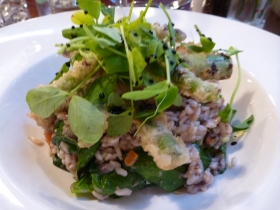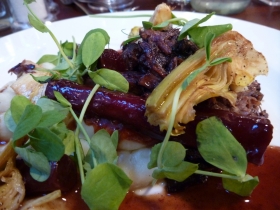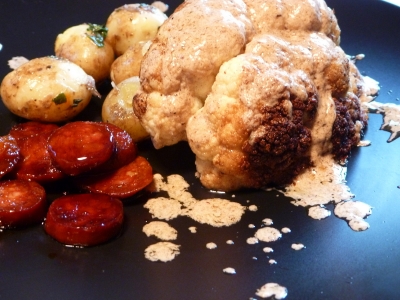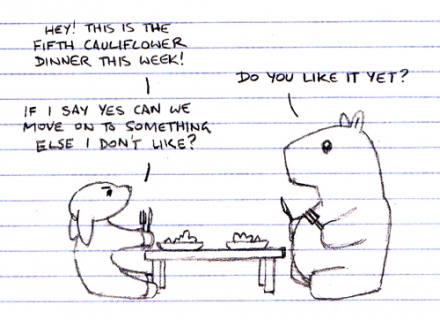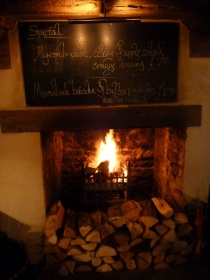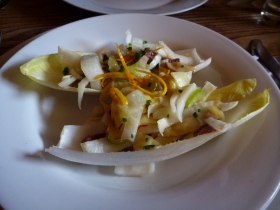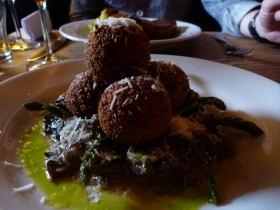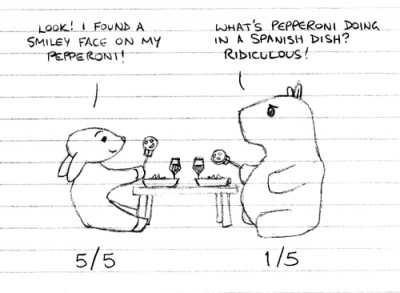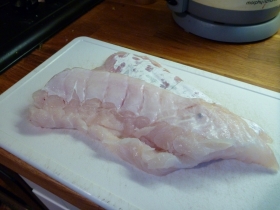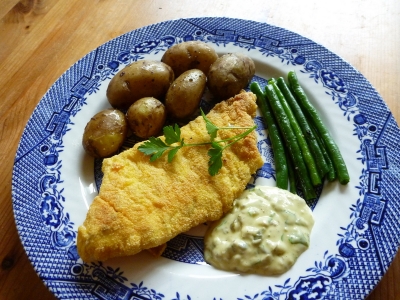Well, I said I’d go back and give them another shot. It’s a good month later, and to cut to the chase the story is just the same: good dining room, friendly service, hit-and-miss food. Looks like chef got a big box of pea shoots in his organic food box this week too, as we had them on pretty much every dish. Don’t believe me? Check the photos.
I’m not actually a natural born critic. Having met and liked the owners, and seeing the potential, I really want to spend this review trying to suggest things they might fix because I do hope that The Mail Room succeeds and thrives. But that would be stupendously pompous of me, with absolutely no qualification to advise on food beyond having eaten out at a lot of good restaurants. Perhaps I have nothing to worry about: they were full on a rainy Thursday night. We came with my parents, who were happy to join in the assessment of the food, although that did prevent me from offering any serious comment when the owner came by to ask whether our meal had been good.
Breads were slow to arrive but good, with unusual flavours of curry and cranberry on offer. In different rolls, I hasten to add. My starter of char-grilled haloumi was a bit heavy on the charring, tasting uncomfortably like that bit of veg that drops between the slats on the barbecue but you rescue anyway. Otherwise a simple and nicely balanced plate with a gooey chilli jam and a scatter of broad beans. Maureen’s crab tian was odd in temperature; the tian still almost fridge cold while the Thai style broth was warm. And if it’s a crab tian, why was it stuffed with crayfish tails? More of a shame was the lack of any flavour or punch in the broth whatsoever, a reminder of the lack of seasoning last outing. On a positive note, my mum had the ravioli this time and declared it good (I noticed more than one ravioli on the plate this time) while a hearty mushroom soup was also liked.
For main course I had ox-tail, properly cooked and served with some sticky salsify, possibly braised in red wine. This was a nice looking plate of decent food, just like my pork from last time. And just like last time, Maureen picked the duffer. Claggy was the only adjective for that risotto. I would rather use it for plastering walls than eating. The rice was still grainy, and I might argue with the title of “wild mushroom” risotto as we could only find domestic mushrooms and could only taste a heavy splash of truffle oil. The tempura asparagus on top was okay, but needed seasoning. My mum enjoyed the
pork dish I enjoyed last time, so consistency there, and my dad enjoyed half a Cornish lobster although he also found fault with the risotto lurking beneath.So there we go. I didn’t feel like writing this, as I was looking forward to cancelling my last review with a turn-around, but having said I would go back it’d be cowardly to duck it. I do itch to focus on the better dishes, but how can I recommend a place if it’s down to luck whether you enjoy your dinner or merely endure it? I must come back to the pea shoots. Pea shoots scattered on three starters and all main courses (only the soup was spared). That’s not a carefully considered element of a plate, that’s a garnish. Garnishes belong on pub food. I suspect The Mail Room’s chef is stretching himself beyond his comfort zone, which is laudable but only if you consistently succeed. I’ve no plans to return.



